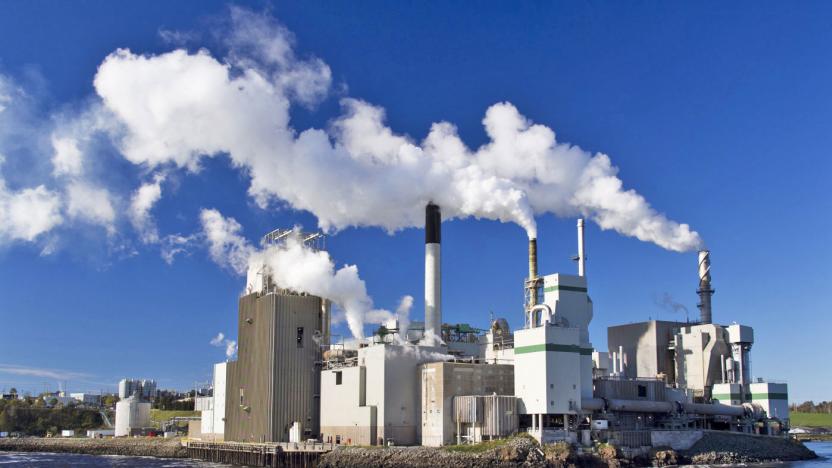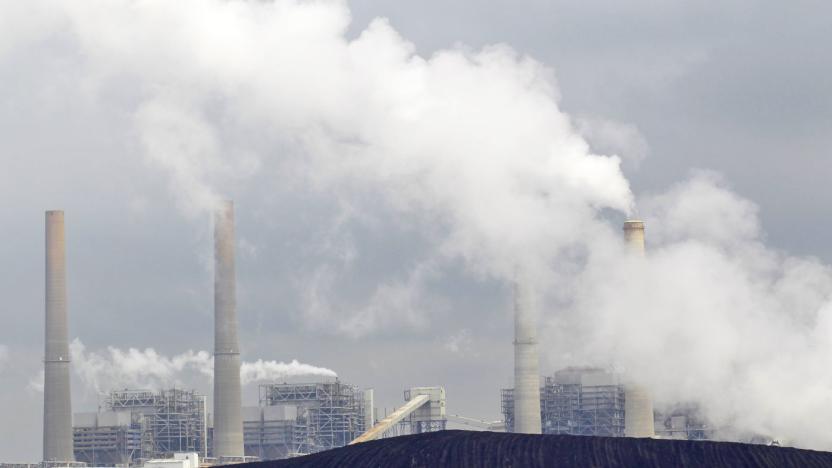timeline16airpolltrack
Latest

NASA satellite finds 39 unreported sources of air pollution
Scientists at NASA's Environment and Climate Change Canada and researchers at University of Maryland, College Park and Dalhousie University discovered 39 unreported "major" sources of toxic air pollution. Using the space agency's satellite imaging, the group located the man-made sources where toxic sulfur dioxide is being emitted. Sulfur dioxide (SO2) is a contributor to acid rain and is regulated on the ground by the EPA. However, to properly police the emissions, the government agency has to know the location of the pollutants.

Your next colored bracelet can detect environmental pollution
Turns out your collection of neon-colored silicone bracelets have a use beyond showing support for a fallen-from-grace cyclist's non-profit after all. The material can actually trap pollutants you might be exposed to during the course of your day, according to a study by Oregon State University. Specifically, OSU was looking for how present fire retardant chemicals were in the households of 92 pre-school children. What'd the researchers find? That somehow, over the course of a week, these kids were exposed to polybrominated diphenyl ethers that aren't being produced domestically anymore.

Apple, Google and Microsoft back EPA's emissions strategy
The White House and Environmental Protection Agency may have their plans for carbon dioxide emissions reduction hanging by a thread in court, but they're getting some big allies in their corner. Amazon, Apple, Google and Microsoft have submitted a joint legal brief supporting the EPA's Clean Power Plan following a challenge by 29 states. They argue that the emissions regulation is not only realistic, but makes good business sense. Prices for solar and wind power are coming down, and their energy is a hedge against both volatile fuel prices and outages -- you can store unused power to ride out a storm, for instance.

Pigeons track air pollution in London with tiny backpacks
A small flock of pigeons have been given tiny backpacks to monitor air pollution in London. The project was dreamt up by Plume Labs, a company focused on the environmental problem, and the marketing agency DigitasLBi. The rucksacks are fitted to the birds using small fabric vests, and the sensors inside are able to measure nitrogen dioxide and ozone levels. Only 10 birds are in flight at any one time, so the amount of data being collected is pretty small. However, it's still a creative way of analysing the air that millions breathe in every day in the capital.

Volkswagen also lied about its gas-powered cars
Volkswagen admitted in September that it used defeat devices aimed at fooling emissions tests in 11 million of its diesel vehicles -- but now its gasoline models are implicated in the scandal as well. On Tuesday, Volkswagen reported that it understated the level of carbon dioxide emissions of about 800,000 vehicles, including gasoline-powered models. This is the first confirmation that some of Volkswagen's gasoline-run vehicles do in fact exceed carbon dioxide emissions. The company didn't provide details in today's revelation, but it said the conclusion comes after conducting internal emissions tests.

Xprize challenge offers $20 million to curb fossil fuel emissions
Sadly, carbon dioxide emissions aren't going away just yet. However, the Xprize crew would like to at least see those emissions do something besides accelerate climate change. They're launching the NRG COSIA Carbon Xprize, a competition that will hand out a total of $20 million to teams that convert fossil fuels' CO2 output into genuinely useful products. The 4.5-year challenge will be separated into two tracks (one for coal emissions, the other for natural gas), both of which will offer a pool of $2.5 million for hitting initial lab milestones and a $7.5 million grand prize for whoever succeeds in the real world.

Google's testing pollution-sensing gear in its Street View cars
A firm that builds environmental sensors is teaming up with Google to turn Street View cars into mobile pollution sniffers. Three of the search engine's mapping vehicles have been equipped with hardware to measure harmful compounds in the atmosphere including carbon monoxide, methane and VOCs. It's early days, but it's hoped that Google will be able to add this information to its maps, enabling people to see detailed air quality reports for their neighborhood. That way, you could plan your next jog to avoid trouble spots and authorities can visualize where they need to direct their clean-up efforts.

Here's what a year's worth of carbon dioxide looks like
It's easy to talk about carbon dioxide (CO2) emissions and their effect on our planet, but visualizing them? That's hard. Thankfully, NASA has stepped up to the plate with a computer model that shows how CO2 travels across Earth's atmosphere in the space of a year. As you'll see in the clip below, a lot of gas in the northern hemisphere originates in major pollution centers across Asia, Europe and North America before it drifts across the globe. The abundance of plant life in the spring and summer quickly cuts down on CO2 levels, but the chemical comes roaring back once fall arrives -- and the concentrations are higher than NASA would like to see.

Google Street View cars have mapped methane gas leaks in big US cities
Google's Street View cars aren't just useful for scouting out a locale in advance -- they might be saving the planet, too. The vehicles have just helped the Environmental Defense Fund publish methane gas leak maps for Boston, Indianapolis and New York City's Staten Island. The Google cars roamed around cities using sensors that could detect both the location and scale of one of the dangerous leaks, driving by at least twice to make sure the results weren't a fluke. Depending on where you live, the data is either reassuring or scary; the older pipes in Boston and Staten Island have an abundance of leaks, while Indianapolis' more recent infrastructure is keeping the problems to a minimum.





